 |
 |
 |
| |
Steep virologic failure drop in Netherlands: initial VL and CD4 strong predictors
|
| |
| |
22nd International AIDS Conference, Amsterdam, Netherlands, July 23-27, 2018
Mark Mascolini
Risk of virologic failure among people starting their first antiretroviral regimen fell steeply from 1996-1999 to 2011-2016 in a nationwide Netherlands study [1]. In 2011-2016, four factors predicted virologic failure: higher pretreatment viral load, lower pretreatment CD4 count, heterosexual HIV acquisition, and sub-Saharan origin.
The study involved people in the ATHENA cohort, a nationwide observational study of all HIV-positive adults and children who do not opt out of data collection from the time they enter HIV care in the Netherlands. This analysis aimed to assess the incidence of virologic failure, defined as the first of 2 consecutive viral loads above 200 copies after more than 6 months of antiretroviral therapy (ART). Researchers limited the analysis to nonpregnant adults in ATHENA at points between 1996 and 2016. They used Cox regression analysis to identify factors linked to virologic failure in people who began ART in 2011-2016.
Over the whole 1996-2016 study period, 1807 of 17,044 adults (10.6%) had virologic failure a median of 1.4 years after starting ART. Compared with people who began treatment in 2011-2016, those who started in preceding periods had significantly higher risks of virologic failure:
-- For 2006-2010: unadjusted hazard ratio (uHR) 2.6 (95% confidence interval [CI] 2.1 to 3.2)
-- For 2000-2005: uHR 5.2 (95% CI 4.3 to 6.3)
-- For 1996-1999: uHR 12.6 (95% CI 10.4 to 15.2)
In the most recent period, 2011-2016, 133 of 6228 adults (2.1%) had virologic failure a median of 1.6 years after starting ART. In these years regression analysis identified 5 independent predictors of virologic failure, at the following adjusted hazard ratios (aHR) (and 95% CI):
-- Men with heterosexual vs gay HIV acquisition: aHR 1.7 (95% CI 1.0 to 2.7)
-- Sub-Saharan origin vs Europe/North America/Australia: aHR 2.3 (95% CI 1.3 to 4.1)
-- Higher baseline viral load: aHR 1.5 per 10-fold higher (95% CI 1.2 to 2.0)
-- Baseline CD4 count below 50 vs above 500: aHR 2.3 (95% CI 1.0 to 5.1)
-- Baseline CD4 count 50 to 199 vs above 500: aHR 2.1 (95% CI 1.0 to 4.5)
Although virologic failure rates dropped steadily in the Netherlands, the researchers stressed a need for "additional support for non-MSM, late presenters, and those originating from sub-Saharan Africa . . . to further optimize combination ART outcomes."
Reference
1. Boender TS, Wit FWNM, van Sighem A, et al. Substantial decline in virological failure after combination antiretroviral treatment (cART) initiation in treatment-naive HIV-positive adults in the Netherlands from 1996 to 2016. AIDS 2018: 22nd International AIDS Conference, Amsterdam, Netherlands, July 23-27, 2018. Abstract THPEB037. https://programme.aids2018.org//PAGMaterial/eposters/1405.pdf

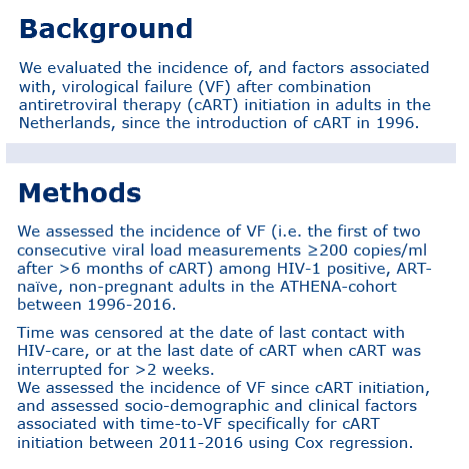
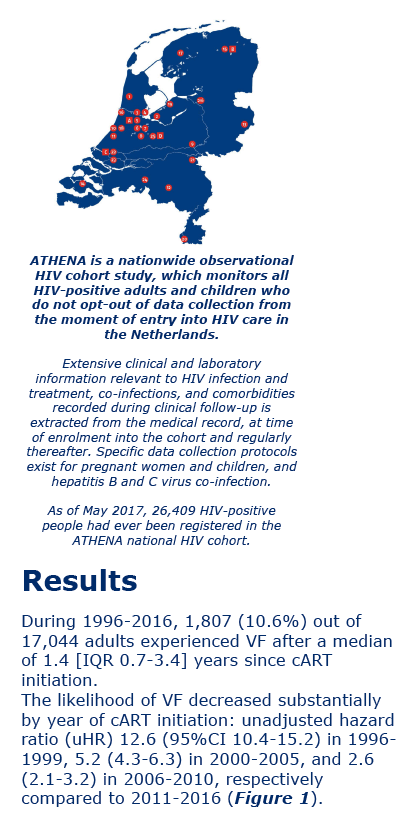
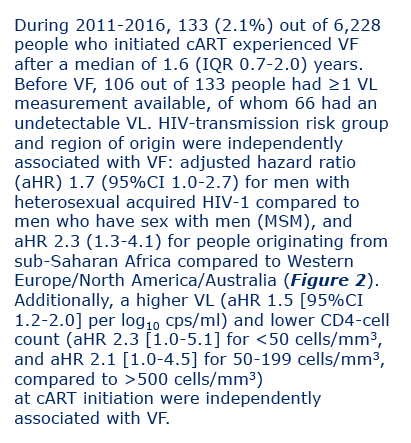
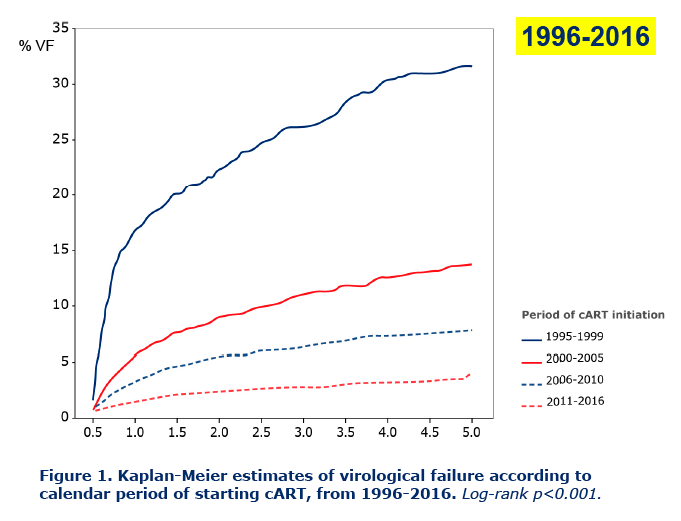
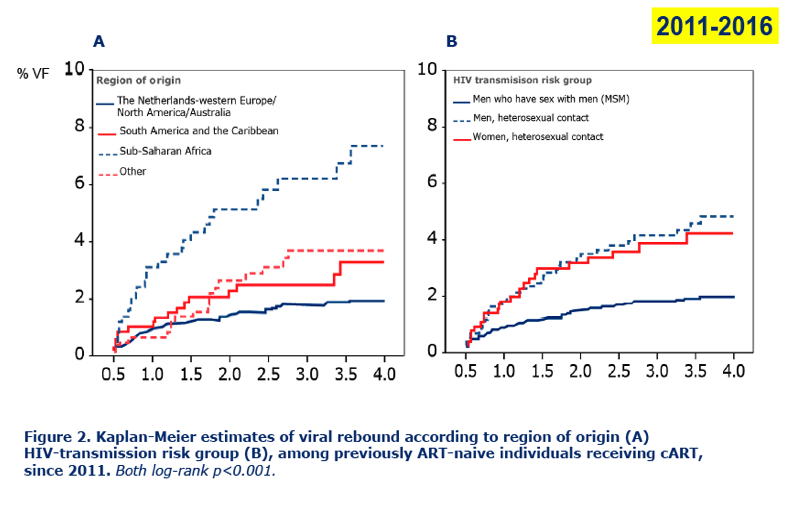
|
| |
|
 |
 |
|
|